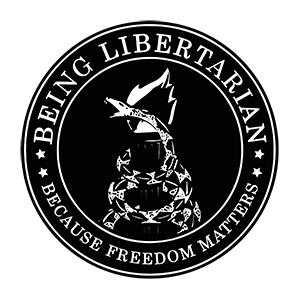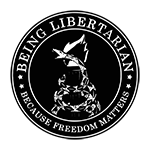Any movement that fails to understand its history will either wither and dissolve, or morph into something unrecognizable. A detailed history of pro-liberty thought throughout the world would span many hundreds of thousands of pages. Even limiting it to American pro-liberty thought would require several volumes.
Therefore, this article aims to be a helpful outline of recommended reading for those interested in understanding the history of the modern American libertarian (and not merely “pro-liberty”) movement. There were certainly many great and influential pro-liberty activists in thinkers in early America and long before it, but the rise of a self-identified libertarian movement (using the definition as we understand it today) began in the early 20th century.
The Old Right
Both postwar American conservatism and American libertarianism arose from what is now called the Old Right, a loosely affiliated (about as loosely affiliated as today’s American right) collection of thinkers and activists opposed to the growing power of the state. The progressive era closed with America’s involvement in World War I, a war economy, and the new central bank, the Federal Reserve. Soon after, America was hit by the Great Depression, with the state’s central planning as an alleged solution, and then World War II.
Old Right figures, including classical liberals, agrarian conservatives, and anti-state leftists, stood in opposition to increasing state control of the economy and involvement in the world wars. Famous Old Rightists included John T Flynn (Forgotten Lessons), Garet Garrett (Defend America First), Robert Taft, and HL Mencken (A Mencken Chrestomathy), who edited The American Mercury, an influential Old Right publication. Other minor figures of the Old Right are biographed by Bill Kauffman in America First!
Another Old Right figure, Albert Jay Nock (Our Enemy, The State), influenced Frank Chodorov (Fugitive Essays) and Murray Rothbard (For a New Liberty), as well as the conservative William F Buckley. Nock’s magazine, The Freeman, ran from 1920 to 1924. Chodorov revived it from 1937 to 1942. It was revived once again in 1950, and was transferred to the Foundation for Economic Education (FEE) in 1954, and continued to be published until its final issue in 2016. The Freeman was one of the key magazines of the libertarian movement. FEE, an organization founded by Leonard Read (I, Pencil) in 1946, was a cornerstone of the libertarian movement, and continues to be today.
In addition to reviving The Freeman, Chodorov also founded the Intercollegiate Society of Individualists in 1953, an organization aimed at promoting individualism and liberty on college campuses. It was later renamed as the Intercollegiate Studies Institute, moving in a more conservative direction.
Libertarian Women
Libertarian organizations often pick three libertarian women as “the greats”: Rose Wilder Lane (The Discovery of Freedom), Isabel Patterson (The God of The Machine), and Ayn Rand (Atlas Shrugged). Depending on who you ask, Ayn Rand’s Objectivist philosophy is either a key part of libertarian philosophy, or something alongside or outside of it. Rand herself rejected the label, but as the saying goes, “It usually begins with Ayn Rand.”
Beyond Rand’s four fiction novels (We The Living, Anthem, The Fountainhead, and Atlas Shrugged), she edited a newsletter that acted as the foundation of the Objectivist movement. Most of her nonfiction books are collections of articles from this newsletter. It began as The Objectivist Newsletter, transitioned to The Objectivist, and then became The Ayn Rand Letter.
The Postwar Split
As the American right became more solidified in the 1960s, its various factions began to split. Three different groups could be seen: the New Conservatives led by William F Buckley and based around National Review (est. 1955), the traditional conservatives led by Russell Kirk (The Conservative Mind) and based around Modern Age (est. 1957), and the libertarians led by Murray Rothbard and based around The Freeman and The New Individualist Review (est. 1961). In the early 1960s, conservatives and libertarians could be found writing for all of these magazines. As the decade continued, the divides were increasingly visible. National Review and Modern Age still exist today, and still represent their respective factions.
The libertarian movement, meanwhile, went through several transformations. As the tensions between conservatives and libertarians increased in the 1960s, Rothbard sought an alliance with the New Left, which culminated in his journal Left and Right: A Journal of Libertarian Thought, which ran from 1965 to 1968. After this, he started The Libertarian Forum, a magazine that ran from 1969 to 1984. An article in the August 1969 issue tells Rothbard’s side of the story of the 1969 Young Americans for Freedom (YAF) convention at St. Louis. At this convention, the conservative faction purged the libertarian faction from YAF. This moment marked the split of the libertarian and conservative movements.
Only a year before, Reason magazine published its first issue, growing to eventually become the most popular libertarian magazine. Two years after the purge, in 1971, the Libertarian Party was born.
The Growing Movement, and Divide
The 1970s saw a tremendous growth in the libertarian movement. The libertarian movement finally had its own political party, which eventually grew to become the third largest political party in the United States. The Center for Libertarian Studies was formed in 1976, which began publishing The Journal of Libertarian Studies a year later. Numerous smaller libertarian newsletters and magazines began appearing. In 1977, the Cato Institute was founded by Charles Koch, Ed Crane, and Murray Rothbard.
The 1980s were much harsher. Much of what grew rapidly in the 1970s began to shrink. And then the libertarian movement itself began to split. Rothbard published a criticism of the failed 1980 LP presidential campaign in the Sep-Dec 1980 issue of his Libertarian Forum, leading to a feud between himself and Ed Crane. This split placed Cato, Crane, and Koch on one side, and Rothbard, Rockwell, and the newly-formed Ludwig von Mises Institute (est. 1982) on the other. After the Libertarian Forum ended, Rothbard went on to publish the Rothbard-Rockwell Report and the Review of Austrian Economics until his death in 1995.
Since then, both “sides” of this libertarian split have held together a libertarian movement. Over time, the split heals, only to be reopened by some event. Many libertarian organizations since then have appeared that transcend this divide. Moving into the 21st century, Reason magazine, the Cato Institute, the Mises Institute, and FEE (among many, many others) have worked to spread libertarian ideas.
The libertarian movement saw its peak with the 2008 and 2012 campaigns of Ron Paul (End The Fed).
Further Reading
In 2008, Brian Doherty published Radicals for Capitalism, a fantastic history of the libertarian movement. It follows five key libertarian figures: Ludwig von Mises (Human Action), FA Hayek (The Road to Serfdom), Ayn Rand (Atlas Shrugged), Murray Rothbard (For a New Liberty), and Milton Friedman (Capitalism and Freedom).
Rothbard’s perspective on the split between the libertarian and conservative movements can be found in his The Betrayal of the American Right. Justin Raimondo has a book on the key figures of the Old and New Right, titled Reclaiming the American Right.








